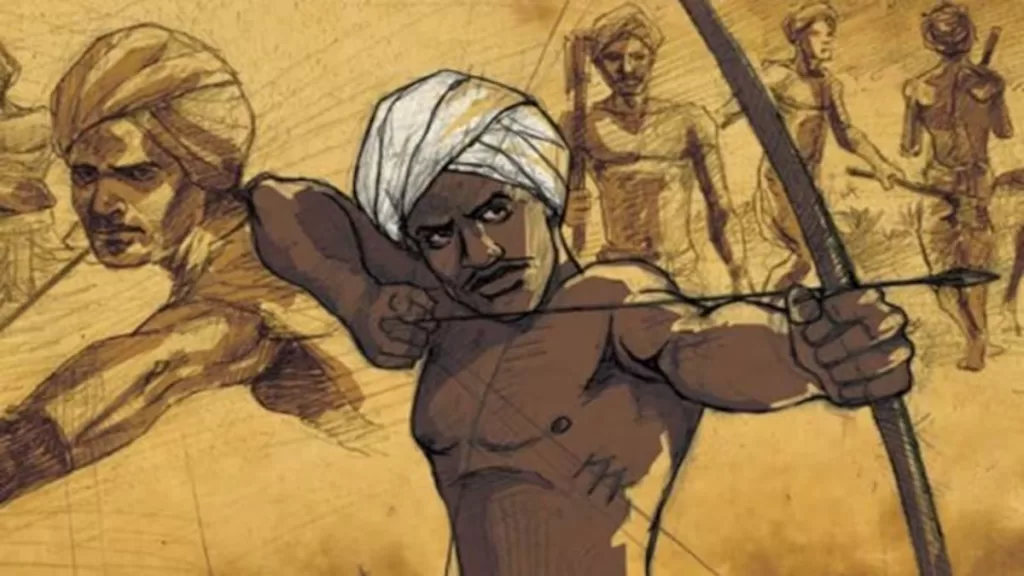Subaltern Movements in India Independence
The Indian freedom struggle, spanning over two centuries, is celebrated for its multi-faceted and inclusive nature. While mainstream narratives highlight the contributions of leaders like Mahatma Gandhi, Jawaharlal Nehru, and Subhas Chandra Bose, the role of subaltern movements—those led by marginalized communities such as tribals, women, lower castes, and religious minorities—deserve equal recognition. These movements were not only against British imperialism but also aimed at dismantling social injustices that had oppressed these groups for centuries. Here, we explore some key subaltern movements and their significant influence on India’s journey to independence.

1. Tribal Movements: Guardians of Indigenous Rights and Land
- Birsa Munda’s Ulgulan (Rebellion): Among the most powerful tribal resistances, the Munda Rebellion, led by Birsa Munda in the late 19th century, targeted both British officials and local landlords who threatened tribal autonomy. The rebellion sought to reclaim indigenous land rights and highlighted the tribal people’s fierce resistance to exploitation. Birsa’s call for “Munda Raj” or self-rule resonated with indigenous communities and established him as a pivotal figure in both tribal and national consciousness.
- Rampa Rebellion: Led by Alluri Sitarama Raju in Andhra Pradesh, the Rampa Rebellion (1922-1924) was a tribal insurgency against the oppressive British-imposed Forest Act, which restricted tribal access to their ancestral lands. Sitarama Raju’s valiant fight for tribal rights became emblematic of the tribal struggle for both cultural and political autonomy.
2. Women’s Movements: Shaping Social Reform and Nationalism
- Role of Kasturba Gandhi and Sarojini Naidu: As wives and leaders, women like Kasturba Gandhi and Sarojini Naidu played integral roles in Gandhi’s movements, particularly in the Salt March and the Quit India Movement. They were instrumental in mobilizing other women, breaking traditional gender roles, and giving the movement a broad social base.
- Aruna Asaf Ali and the Quit India Movement: Known as the “Grand Old Lady” of the Indian Independence Movement, Aruna Asaf Ali emerged as a key leader during the Quit India Movement. Her efforts were vital in keeping the spirit of resistance alive, especially when the British clamped down on leadership, and her bravery inspired countless women to step into political roles.
3. Lower Caste Movements: Advocating for Social Justice and Equality
- Dr. B.R. Ambedkar’s Advocacy for the Untouchables: As a Dalit leader and jurist, Dr. B.R. Ambedkar championed the cause of social equality, which he saw as inextricable from India’s independence. He opposed caste discrimination and pushed for an inclusive vision of freedom, making him one of the foremost advocates for social justice.
- Periyar E.V. Ramasamy and the Self-Respect Movement: In Tamil Nadu, Periyar’s Self-Respect Movement questioned the deeply ingrained caste hierarchy. Through protests, writings, and public speeches, Periyar emphasized the need for social reforms alongside political independence, aiming to liberate the oppressed classes from the shackles of Brahminical dominance.
4. Religious Minorities and Their Fight for Freedom
- Maulana Abul Kalam Azad: A visionary and an Islamic scholar, Azad championed Hindu-Muslim unity and was one of the foremost leaders of the Indian National Congress. As India’s first Minister of Education, he emphasized secularism and the importance of universal education for building a strong nation.
- Sikh Contributions: The Sikh community actively resisted British oppression through revolutionary efforts, with figures like Bhagat Singh and Udham Singh symbolizing an uncompromising stance against colonial rule. Bhagat Singh’s philosophy of armed struggle and Udham Singh’s assassination of Michael O’Dwyer underscored the Sikh community’s commitment to the cause of independence.
Legacy and Impact of Subaltern Movements in the Freedom Struggle
Subaltern movements within the Indian independence struggle contributed a layered perspective to the fight for freedom. By amplifying voices often marginalized by traditional power structures, these movements underscored that the quest for freedom was also a fight for social justice, economic equality, and self-respect. Subaltern leaders not only expanded the reach of the independence movement but also laid the groundwork for a more inclusive vision of post-independence India.
This invaluable legacy continues to inspire social reform movements across India, shaping the nation’s collective memory and contributing to an ethos of equality that modern India aspires to uphold. In recognizing these contributions, India’s freedom struggle is celebrated as not only a journey to political liberation but also a profound social transformation that empowers each citizen, regardless of background or status.
📚 Take Your Trading And Financial Skills to the Next Level!
If you enjoyed this post, dive deeper with our Profitable Trader Series—a step-by-step guide to mastering the stock market.
- Stock Market 101: Profits with Candlesticks
- Stock Market 201: Profits with Chart Patterns
- Stock Market 301: Advanced Trade Sheets
Start your journey now!
👉 Explore the Series Here
For Regular News and Updates Follow – Sentinel eGazette
FAQs
Q1: What role did women play in India’s freedom struggle?
A1: Women like Kasturba Gandhi and Sarojini Naidu mobilized other women and took active roles in significant movements, challenging traditional gender roles and contributing to national leadership.
Q2: Who was Birsa Munda and what was his impact?
A2: Birsa Munda was a tribal leader who led the Munda Rebellion against British rule in the late 19th century, advocating for tribal rights and autonomy.
Q3: What were the main objectives of Dr. B.R. Ambedkar in the freedom struggle?
A3: Dr. B.R. Ambedkar aimed to eradicate caste discrimination and promote social justice, emphasizing that political freedom should also ensure social equality.
Q4: How did the Sikh community contribute to the independence movement?
A4: The Sikh community actively resisted British oppression through revolutionary efforts, with leaders like Bhagat Singh and Udham Singh symbolizing their commitment to independence.
Q5: What is the significance of subaltern movements in modern India?
A5: Subaltern movements laid the groundwork for a more inclusive vision of post-independence India, inspiring ongoing social reform and advocating for the rights of marginalized communities.